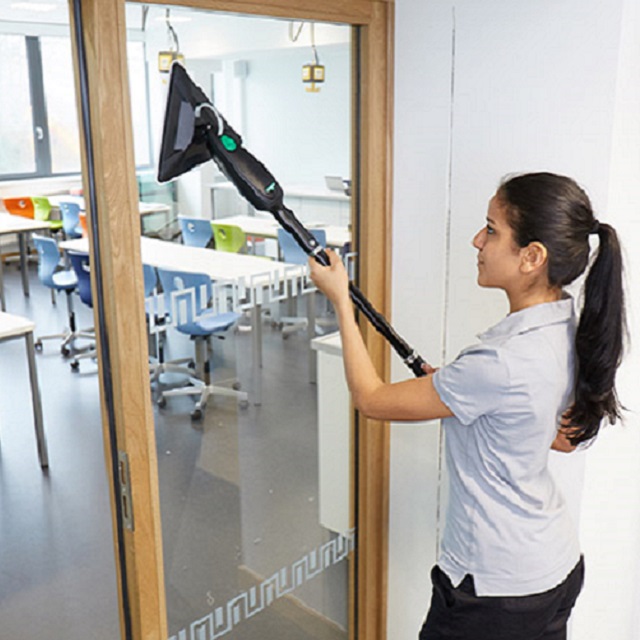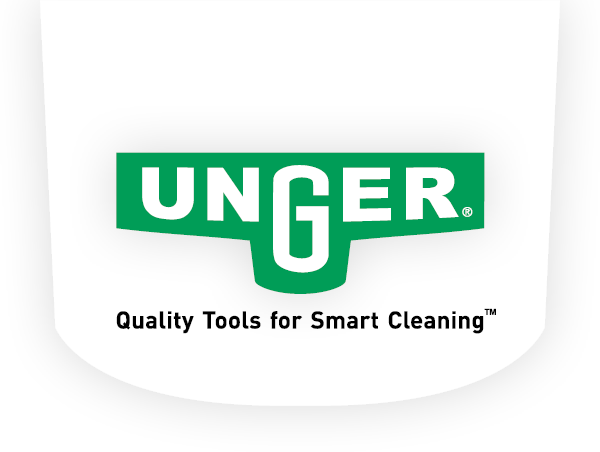NEW! Powerful Nano Filtration with Unger's HydroPower® Nano See The Product

Sourcing Commercial Cleaning Equipment When Starting a New Business
Before the pandemic, the cleaning service industry was part of the $33 billion facility services industry, with more than 55,000 companies providing commercial cleaning in the United States and more than 2.3 million cleaning service workers. Now, with the cleaning and disinfecting of public facilities taking on a new level of importance during the pandemic, it’s no surprise that people are considering starting up their own cleaning company.
The Opportunity for New Commercial Cleaning Companies
Needless to say, that with more than 5.9 million U.S. commercial buildings containing a total of 97 billion square feet as of 2018, there’s a lot of space to clean! But cleaning business operator be warned, that while the opportunity is great, it is also competitive.
A new Market data study examined the U.S. commercial cleaning and maintenance services industry. The study found that the business is extremely competitive, comprised of 1.4 million establishments – mainly small operators, including 36,000+ U.S.-based franchised outlets. Competitors run the gamut from mom & pop cleaners to commercial cleaning giants.
But don’t let the competitive landscape deter you. The pandemic has mandated more frequent deep cleanings to combat infectious disease spread and may ultimately redefine the way the industry cleans beyond COVID-19. Using a checklist for commercial cleaning businesses will help you to cross your T’s and dot your I’s, but when it comes to deep cleaning, one of the key areas in determining the long-term stability and profitability of your business hinges on the commercial cleaning equipment you source. The following guidance will help you in sourcing the right tools for your start up.
Making Your List of Commercial Cleaning Tools & Equipment
The Janitorial Store provides training on running and growing a cleaning business, and we found their lists of tools, supplies and equipment below comprehensive and helpful as you organize your sourcing efforts. These lists are divided into three categories: 1) Tools, which are the items that are repeatedly used for ongoing cleaning tasks; 2) Supplies, which are products that need to be replenished regularly; and 3) Equipment, which are heavier and more durable goods.
Cleaning Tools List:
These are the items that you and your cleaning crew will bring with you to every job to use daily for regular cleaning tasks. They include:
- Microfiber rags and cloths
- Microfiber mops
- Buckets
- Brooms & Dustpans
- Dusters
- Restroom cleaning tools
- Spray bottles
- Squeegees
Supplies List:
This list includes commercial cleaning products that get used daily as part of your cleaning routine.
- Latex and neoprene gloves
- Window cleaning solution
- Bathroom cleaning solution
- Disinfecting solution
- Garbage bags
- All-purpose cleaners
Equipment List:
These larger cost items will provide years of service use.
- Cleaning Carts
- Indoor Window Washing Kit
- Outdoor Window Washing System
- Floor Mopping Solution
- Restroom Cleaning System
- Industrial grade vacuum cleaners
- Carpet steam cleaners
Sourcing Commercial Cleaning Equipment and Tools
Whether starting a new business or expanding upon an existing one, sourcing the right cleaning equipment can have a significant impact on cleaning staff productivity and safety, as well as the cleaning and disinfecting effectiveness. There are several factors that should go into the purchasing decision and after over 50 years in the commercial cleaning business, we’ve identified the following list of important considerations that have proven to help business operators make better upfront decisions.
- Consider the Price of the Equipment in Terms of the Longer-Term Cost and Value
One of biggest mistakes that we see is business owners, facility manager and building service contractors making a cleaning tool decision based on price alone. The problem is that price – how much you pay for a product initially – doesn’t take into account the longer-term cost of using the product and ROI.
While one cleaning product may initially cost more than another, you need to consider other costs associated with the cleaning process to compare apples to apples, such as:
- Training time for custodial staff;
- The time it takes cleaning staff to complete the task at hand using the product;
- Any future maintenance anticipated or recommended for the product;
- The lifespan of the product, and if certain choices, such as choosing a microfiber mop vs. a cottons string mop, contributes to the product’s longevity and
- How the design of the product may or may not enhance the safety of workers and therefore minimizing injuries and/or days out of work. For example, using a window cleaning kit that features a telescoping pole to clean hard to reach areas, allowing staff to avoid moving furniture and/or using ladders.
In a competitive industry, you also have to the consider the business risks you assume when you buy based on price alone. While you may reap the initial benefits of saving money on a less expensive product, you’ll ultimately be unable to compete with the larger commercial cleaning businesses. Going for the cheaper products is tempting, but in addition to hidden costs, there are quality, productivity and performance issues that may keep your business and staff from meeting cleaning expectations. And when expectations are not met, the result is a dissatisfied customer. Once you disappoint enough customers, the larger issue is poor customer relationships and a damaged business reputation. According to market research, 55% of commercial cleaners lose business due to customer satisfaction.
- Get All the Details from Potential Suppliers
When looking for an equipment supplier, there is a laundry list of considerations and questions you can ask potential vendors, things like online ordering availability, invoicing and purchase orders, sales reps’ expertise, training and support resources, equipment maintenance programs, financing options, etc. One point that we encourage you to consider is the product guarantee that the supplier does or does not offer. Some questions that you can ask:
- Is there a warranty? How long is it? What does it cover (parts, repairs)?
- What are the training requirements for this product? What will that cost you? Can you get help with training from the manufacturer or your supplier?
- Does this product align with your company’s sustainability goals? You may want to consider buying green cleaning products, as this can be a very appealing feature to some clients.
- What are the maintenance costs and how do they compare to other options?
- What is the life expectancy of the equipment? How does that compare to others?
- Look for a Reputable, Experienced SupplierWanting to source quality tools designed to make the cleaning experience cleaner, faster and safer, one of the best ways to do so is to select a reputable provider for your cleaning equipment. To best gauge the reputation of potential suppliers, you can explore their customer testimonials, customer use cases and product reviews available on their website. If they are not available, you should feel comfortable requesting this information.
Learn More About Modern Commercial Cleaning Equipment
Starting a commercial cleaning business or expanding on existing services can feel like a daunting task, but as far as the equipment and supplies you’ll need go, if you approach it strategically, your chances to meet profitability goals improve. Choosing the best commercial cleaning products and making purchasing decisions should not be based on price alone, so take the time to explore the considerations above that will serve your business better over time.
Contact Us to Discuss Your Commercial Cleaning Equipment Needs
